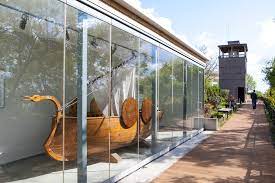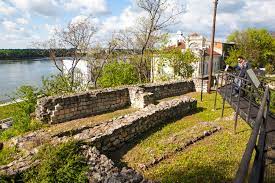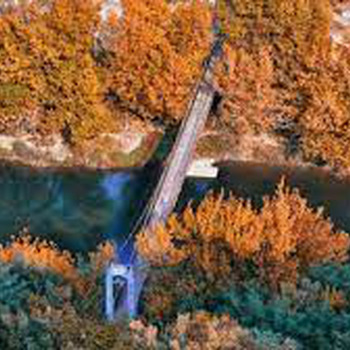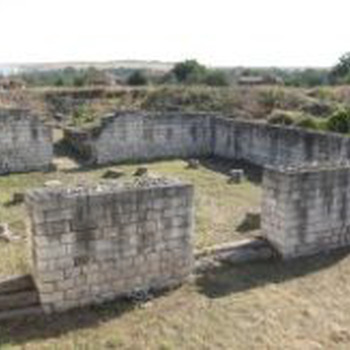Ancient fortress Sexaginta Prista and the ancient necropolis
Overview
Sexaginta Prista is located in the modern northwestern part of the city of Ruse, on a hill on the banks of the Danube. The fortress was located in the late nineteenth century by Felix Kanitz based on the distances between the fortresses noted in Roman route maps. The first information about the fortress and its remains we receive in the early twentieth century from the Shkorpil brothers. Remains of the fortress have been registered during constructions and excavations in the yard of the Military Club, but there are archeological excavations in the period 1976-1978. and 2005-2006. As a result, about 50 meters of the northwestern fortress wall and tower, six buildings, the Temple of Apollo and the Principia - the headquarters of the military unit in Sexaginta Prista were discovered. Conservation of the open structures was carried out in 1976-1978 and in 2002 an open-air exhibition "Sexaginta Prista" was opened. In the years since then, the site has been socialized and is now among the museum exhibits visited. Traditionally, the name of the fortress translates as "Port of the 60 ships". After analyzing all available sources, it was found that the castle got its name in connection with events from the end of the first century, namely the Dacian Wars of Emperor Domitian (85-89). Then a Roman legion of approximately 6,000 men was transferred across the Danube at the mouth of the Rusenski Lom River. Exactly 60 prism ships were needed for this operation. In honor of the victory over the Dacians, the castle received its new name. Probably until then the fortification bore the Thracian name of the river Rusenski Lom. The first known epigraphic and written sources about Sexaginta Prista are from the beginning of the 2nd century. Until now, it was assumed that there was an unfortified Thracian settlement on the territory of the castle in the period from the third century BC. until the arrival of the Romans. Recent research proves beyond doubt that the hill is a place where the Thracians performed rituals and cult practices unknown to us. Remains of this activity are hundreds of pits, of which about 50 have been studied so far. The Thracian pit complex dates back to the first century BC. - I century AD The place is an important cult center, and the nearby village (about 500 meters) has important commercial and political functions. This period is among the poorly studied archeological sites in Bulgaria. Many ceramic vessels, bronze objects, coins, bones and other finds were found in the pits. Some of the vessels are set whole. Unique is a zoomorphic vessel with rich incised and polished decoration, ending with an eagle's head. Among the other materials, several (fibulae, etc.) stand out, which are usually found in Western Europe. Surveys in 2005/2006 show that the first Roman military camp (from the end of the 1st to the end of the 3rd century) was not located in the study area. Its location has not yet been established, but it is probably located at the mouth of the Rusenski Lom River, further inland from the late antique fortress. The remains of the hill from the period II - III century are of civilian buildings, probably a camp settlement, separated as a cult center. The remains of several buildings have been studied. One of them is the temple of Apollo, where four whole and fragments of votive tablets of the Thracian horseman and Apollo, pottery, coins and other finds were found. An altar of Apollo with an inscription was found in its place. The plan of the open temple is interesting. It is oriented northeast - southwest and plans to resemble a Christian church. The closest parallels of such pagan temples are near the village of Ruchey, Krumovgrad region; Benwel, England and Porolisum in Dacia (Romania). The discovered temple is a proof of the borrowing from the early Christians and the planned constructions from the pagan temples. The votive tablets of the Thracian horseman and Apollo were found in the exedra of the temple, laid in pits. The building ceased to function at the end of the 3rd century and one of the most important buildings in the Roman military camp was built on it - the Principate. At that time (late III - early IV century) was built the late antique castle, which includes the buildings discovered in 1976 - 1978, the northwestern fortress wall and tower.
Recommended
- Ecomuseum with an aquarium
- Panoramic site Leventa
- Sexaginta Prista Fortress
- Pantheon of the Revivalists
- The Viennese house
- Prince's residence
- King's stone
- Quay
- Regional historical museum;
- Monument of freedom


 Bulgarian
Bulgarian Romanian
Romanian




